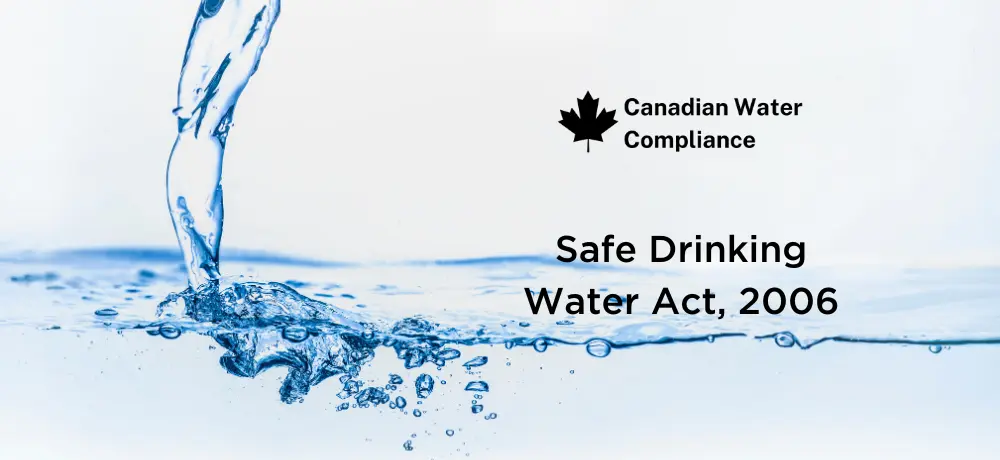
Written By: Canadian Water Compliance | On
The Safe Drinking Water Act, 2006 (SDWA) is a landmark piece of legislation that fundamentally transformed drinking water regulation in Ontario. Enacted in response to the tragic Walkerton E. coli outbreak in 2000, this comprehensive law established a robust framework to protect public health by ensuring safe, high-quality drinking water for Ontarians.
The Act casts a wide regulatory net, covering all municipal drinking water systems as well as many non-municipal systems. This includes systems serving designated facilities like schools, day cares, and nursing homes. By bringing these diverse systems under one regulatory umbrella, the SDWA ensures consistent standards across the province.
Under the SDWA, all municipal drinking water systems must obtain an operating licence. This licensing process involves several key components:
This multi-faceted approach ensures that water systems are operated by qualified entities with proper infrastructure, planning, and financial resources.
The Act mandates rigorous and frequent testing of drinking water for a wide range of potential contaminants. Key aspects include:
These measures provide a robust early warning system for potential water quality issues.
Recognizing the critical role of human expertise in water safety, the SDWA requires all operators of drinking water systems to be trained and certified. This includes:
By ensuring a high level of competence in water treatment and distribution, this requirement significantly reduces the risk of operator error leading to water quality issues.
To ensure compliance, the SDWA provides for robust enforcement mechanisms:
These stringent penalties serve as a powerful deterrent against cutting corners on water safety.
The SDWA has dramatically raised the bar for water quality compliance in Ontario. Water system owners and operators must now adhere to strict protocols and standards, including:
These requirements have fostered a culture of continuous improvement and transparency in the water sector.
While the SDWA has greatly improved drinking water safety in Ontario, some challenges remain:
The Ministry of the Environment, Conservation and Parks continues to work with stakeholders to address these challenges and refine the regulatory framework as needed.
Ontario's Safe Drinking Water Act, 2006 stands as a model for drinking water legislation in Canada and beyond. It demonstrates the province's unwavering commitment to protecting public health through rigorous water quality standards and comprehensive oversight.
As water professionals, it's crucial to stay informed about the Act's requirements and any updates to ensure ongoing compliance. Regular training, proactive risk management, and a commitment to continuous improvement are essential in meeting the high standards set by the SDWA.
The legacy of Walkerton reminds us that safe drinking water can never be taken for granted. The SDWA provides a strong foundation, but it requires the ongoing vigilance and dedication of water system owners, operators, and regulators to ensure that every Ontarian can trust the water flowing from their tap.
For more information on water compliance in Canada, including resources for water system operators and owners, contact our team of experts. Together, we can continue to safeguard Ontario's drinking water for generations to come.